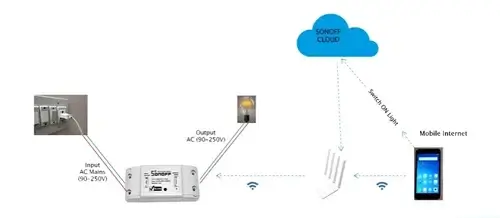Resistive Position Sensors in IoT
In industries where even the smallest movement matters, knowing the exact position of a part or component is crucial. That’s where resistive position sensors come in. These sensors measure displacement or position by converting physical movement into a change in electrical resistance.
Now, when combined with IoT (Internet of Things), resistive position sensors don’t just detect position — they communicate it, track it, and even help automate systems in real time. Let’s explore how these sensors work, why they’re useful, and how IoT takes them to the next level.
What Is a Resistive Position Sensor?
A resistive position sensor works on a simple principle: movement changes the resistance in the sensor, which is then measured and converted into a readable signal.
Common types include:
- Linear potentiometers: Measure straight-line movement.
- Rotary potentiometers: Track rotational movement.
Imagine a sliding volume control on an old radio. As you move the knob, resistance changes, and the output changes accordingly. That’s essentially how resistive sensors work, but in industrial and IoT applications, the measurement is far more precise and automated.
Why Resistive Position Sensors Matter
Resistive sensors are popular because they are:
- Simple and reliable: Easy to integrate into systems.
- Cost-effective: Lower cost compared to some optical or magnetic sensors.
- Precise enough for many applications: Especially in robotics and industrial automation.
For example, in a robotic arm, a resistive linear sensor can detect the exact position of the arm as it moves. This ensures that the robot places objects exactly where it’s supposed to, avoiding errors and improving efficiency.
IoT Integration: Smarter Positioning
Traditionally, resistive sensors would send signals locally to controllers. With IoT, their capabilities expand dramatically:
- Remote monitoring: Track position from anywhere through dashboards.
- Automation: Systems can adjust in real time based on sensor feedback.
- Data analytics: Historical position data can optimize processes and detect anomalies.
- Predictive maintenance: Detect wear or drift before it affects performance.
For instance, in a smart conveyor system, resistive sensors measure belt positions and ensure proper alignment. IoT integration allows engineers to monitor multiple conveyors in real time, receive alerts if something goes off track, and even adjust operations remotely.
Real-World Applications
Resistive position sensors combined with IoT are used in several industries:
- Robotics: Accurate movement tracking for assembly and manufacturing robots.
- Automotive: Measuring pedal or gear positions for safety and performance.
- Industrial Automation: Monitoring moving machinery parts for precise operation.
- Medical Devices: Tracking positions in prosthetics or adjustable hospital equipment.
By adding IoT connectivity, operators can get real-time updates, automate corrective actions, and improve overall system efficiency.
Benefits of IoT-Enabled Resistive Position Sensors
- Real-Time Insights: Always know the exact position of critical components.
- Remote Control: Make adjustments without being physically on site.
- Predictive Alerts: Detect issues before they cause downtime.
- Enhanced Accuracy: Combine sensor precision with intelligent analysis.
- Operational Efficiency: Optimize processes based on live data.
IoT integration turns a simple resistive sensor into a smart device capable of improving efficiency, safety, and decision-making.
Conclusion
Resistive position sensors may be simple in design, but when paired with IoT, they become powerful tools for real-time monitoring and automation. From robotics to industrial systems, these smart sensors ensure that every movement is measured, tracked, and optimized — making modern machinery smarter and more reliable.




